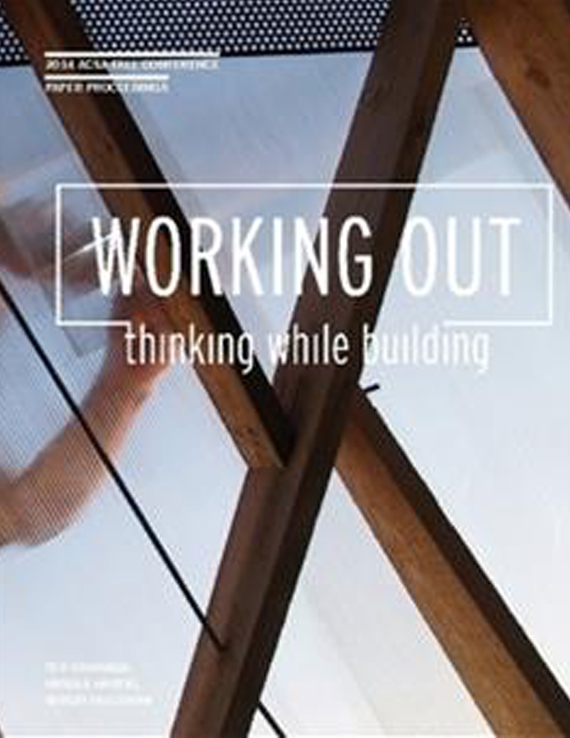Author(s): Bradley Walters & Mark Mcglothlin
Architecture, which has always involved drawing before building, can be split into prior and subsequent activities: design and construction. The building can be discarded as an unfortunate aftermath, and all the properties, values, and attributes that are worth keeping can be held in the drawing; perhaps a better way of putting it would be to say that they retract back into the drawing. 1Robin Evans’ comments, offered as part of a broader review of Daniel Libeskind’s Chamber Works: Architectural Meditations on Themes from Heraclitus, seem a strange point of departure to reflect on constructing architecture. Written in 1984, Evans’ thoughts were a provocative reminder that architecture’s meaning was not entirely defined by the act of construction, and that a critical uncoupling of design and construction could yield profound and powerful architectural results. In that era, architectural education favored experimentation through the reflective crafting of spatial ideas, probing issues of our discipline’s interiority as situated within and amongst other forms of linguistic, artistic, cultural, and social production. Like many of today’s educators, we came of age during precisely this moment. The educational experiences upon which our fundamental architectural beliefs were founded reinforced the potency of architectural meaning as being influenced by, but independent of, construction. As we donned mortarboards and prepared to engage the material world of practice, the architectural academy was just beginning to recognize the emerging voices of design-build methodologies as a critical component of design pedagogy. In hindsight, this interest in hands-on building is not entirely surprising, as it helped offset the earlier retreat of architecture towards an exercise of images and words. But more importantly, it reminded the discipline that direct encounters with materials and construction provided a kind of learning experience that transcended theoretical trappings and offered the potential meanings found only through the making of “real” things. In retrospect, what stands out to us is not the apparent dispute between the primacy of either theoretical prowess or material mechanics in architectural education, nor do we wish to create a tempest where one does not exist. Rather, we are interested in exploring the distinctions, overlaps and syntheses between these two principles within design teaching, the potential ends that might be reached, and most importantly the knowledge they imbue, both explicit and tacit. We see the opportunity to probe issues of learning that cannot be taught and architectures that cannot be built. Design-build projects bring these issues into acute focus. We sit at a curious moment, closing the chapter on one solar decathlon house and the initiating of a second. As we take a moment between these two projects, we find ourselves reflecting on both theoretical intents and material realities, and in doing so wishing to examine the broader role of design-build projects within the layered fabric of design pedagogy. Notes: 1. Robin Evans, “In Front of Lines That Leave Nothing Behind,” in Architectural Theory Since 1968, ed. Michael K. Hays, K. Michael. (Cambridge, Mass: The MIT Press, 1998), 488. Print.
Volume Editors
Sergio Palleroni, Ted Cavanagh & Ursula Hartig
ISBN
978-0-935502-94-7

 Study Architecture
Study Architecture  ProPEL
ProPEL 
